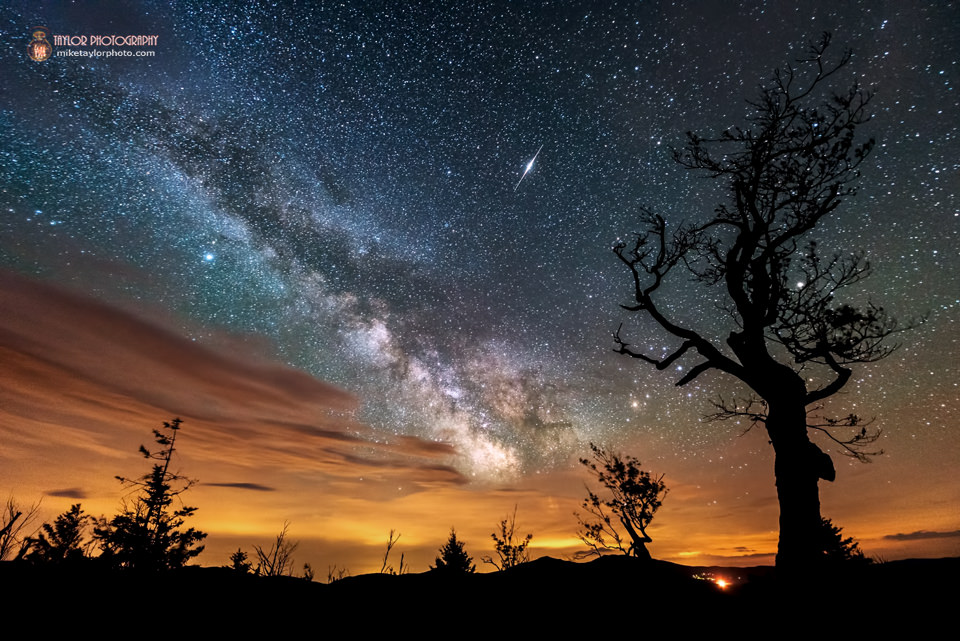Ever seen a flash in the night sky and wondered if you were seeing things? Iridium flares are often mistaken for meteors because of their notable bright flashes of light in the night sky but they are actually caused by a specific group of satellites that orbit our planet. The
Iridium communication satellites
are just in the right orbit that when sunlight reflects on their antennas, a flash -- or flare -- is visible down on Earth. There are currently about 66 Iridium satellites in orbit, so flares are a rather common occurrence.
This image from photographer
Mike Taylor
is one frame from a timelapse of the Milky Way and other features of the night sky in motion against a silhouetted foreground. "Photographed from western Maine, this shot includes quite a bit of light pollution and some fast moving cloud cover," Mike told Universe Today via email. "Most of the light pollution in this image is coming from Farmington, Maine which is about 35 miles from this location."
Mike added the footage from this timelapse will be featured in his upcoming short film "Shot In The Dark."
He also provided this info about Iridium flares:
Iridium satellites are in near-polar orbits at an altitude of 485 miles. Their orbital period is approximately 100 minutes with a velocity of 16,800 miles per hour. The uniqueness of Iridium flares is that the spacecraft emits 'flashes' of very bright reflected light that sweep in narrow focused paths across the surface of the Earth. An Iridium communication satellite's Main Mission Antenna is a silver-coated Teflon antenna array that mimics near-perfect mirrors and are angled at 40-degrees away from the axis of the body of the satellites. This can provide a specular reflection of the Sun's disk, periodically causing a dazzling glint of reflected sunlight. At the Earth's surface, the specular reflection is probably less than 50 miles wide, so each flare can only be viewed from a fairly small area. The flare duration can last from anywhere between 5 to 20 seconds and can easily be seen by the naked eye.
If you want to try and see an Iridum flare for yourself, check out
Heavens Above
for your location.
For this image Mike used: Nikon D600 & 14-24 @ 14mm f/2.8 - 30 secs - ISO 3200 – WB Kelvin 3570 06/23/14 – 11:07PM Processed via Lightroom 5 & Photoshop CS5
Check out more of Mike's work at his website:
Taylor Photography
. He also leads
workshops on night sky photography
.
Want to get your astrophoto featured on Universe Today? Join our Flickr group or send us your images by email (this means you're giving us permission to post them). Please explain what's in the picture, when you took it, the equipment you used, etc.
 Universe Today
Universe Today
